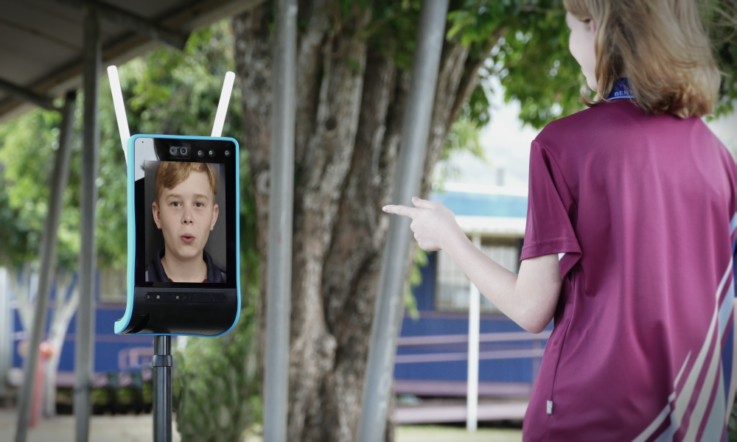Supporting students through occasional illnesses and absences will be a familiar experience for most teachers. However, when students experience prolonged absences from school due to serious illness, this can bring up a different set of emotional, social and educational challenges for the student, their teacher and classmates.
This has been a familiar experience for Jennifer Hoare, Year 5 teacher in the junior school at Waverly College – an independent boys’ school in Bondi, New South Wales. The school has a total of 1100 students from Year 5 to Year 12, with 330 Year 5 and 6 students making up the junior school cohort.
‘Each year, we always come across students who would need support for, often, physical illnesses, but also for their wellbeing. So we might have students that suffer illnesses such as anxiety and depression,’ Hoare tells Teacher.
‘But the main experience I’ve had over the last number of years, is that I did have a boy in my class [who was diagnosed with cancer]. And that was obviously a very big shock for the boy and for the family, but also for the class and the school community.’
Responding with compassion and care
When a student is diagnosed with a serious illness, often an important focus for schools is to keep the student on track with their learning. However, Hoare says she’s found it important to meet the student where they are at, and recognise that feeling very unwell will likely reduce that student’s capacity to focus on work.
‘I think we take on the idea that they continue at least some type of academic stimulus… But what can also be challenging with that, is that they don’t feel like it,’ she explains.
‘So I think as educators and teachers, we learnt that the most important thing for a student is to be able to enjoy the things that we’re giving them, and not feel like things had to be completed.
‘And that’s the most important thing, I think, to remember – we have to cater to how they feel each day, and their ups and downs over that period of time.’
Hoare explains that when first learning of a student’s diagnosis, the first steps the school would take is to reach out to the family. Her first response after reaching out was to visit the student and family in the hospital. ‘This was a way of showing that we were there for the family and the student the whole journey through their illness.’
From there, strategies to support the student included some trial and error, keeping open communication with the family and being led by their needs, and speaking with hospital and school staff.
Liaising with professionals
Reflecting on her own experience, Hoare says, ‘I was in touch with the hospital in terms of their education unit which gave academic support to the student, but I was also in touch with nurses who were the main carers as to what needs they had,’ she says, explaining that she liaised most weeks with the school that operated in the hospital, working together on a program to provide the student what they would be missing in class.
‘I also consulted with our own executive team within the college, in terms of making sure that we were following guidelines and that everyone was kept in the loop as to what was happening.’
Maintaining connection with the outside world
‘I think a key factor is keeping that connection and making the patient feel that they are always part of the class even when they’re not present in the room.’
Hoare says that while there are many ways to help a student stay connected, her school was fortunate to have technology which enabled students to see their teacher and peers remotely by using a laptop from home to manoeuvre a robot with a screen around the classroom.
‘This meant they sort of were like a presence each day within the room. So that was a fantastic way of keeping connected. I know with technology now, Google Meet and Zoom would be a way that students keep in contact when they feel like it.’
‘If connection is there and they don’t feel isolated, that’s a way for them to feel that they’re sort of living more normally rather than living in a timeframe of being terribly ill.’
Showing support as a school community
Hoare explains that in her experience, banding together to show support involved the whole school community, with students, teachers and parents finding different ways to contribute.
Besides staying socially connected with the unwell student, classmates showed support by making lots of cards and videos and visiting the student where possible. Parents in the year group also rallied together, keeping an open email communication going to brainstorm ways to help.
‘I didn’t feel like as a teacher I was on my own, I felt that the parents rallied together really well, collaboratively, in that we could think of different ways to show our support. And as a staff, we rallied together really well and the whole school community were all very aware of how we could all help as a community.’
Another way the school community showed support was through engaging in fundraising for foundations and charities where the specific illness is being supported, such as Footy Colours Day.
‘This is a fundraiser held in schools which allows the students to dress in their favourite footy jersey,’ explains Hoare. ‘And it raises awareness of programs and charities that are there to assist patients that are experiencing severe illness.
Besides fundraising as a way to show support, Hoare explains that it also helped students reflect on their own values and those of the school.
‘It’s a really great opportunity for students to understand that we’re a school that wants to support those in need, and how we take very seriously how fortunate and privileged we are, that we really are there for people who are experiencing difficult times.’
Further reading
Fight Cancer Foundation’s Footy Colours Day has a range of resources and tips for teachers which can be accessed here.
Does your school have strategies in place for supporting students through prolonged absences due to serious illness? If you have a student who is currently unwell with a serious illness, consider some of the strategies Jennifer shares in this article for keeping the student connected with their classmates and the wider school community.



